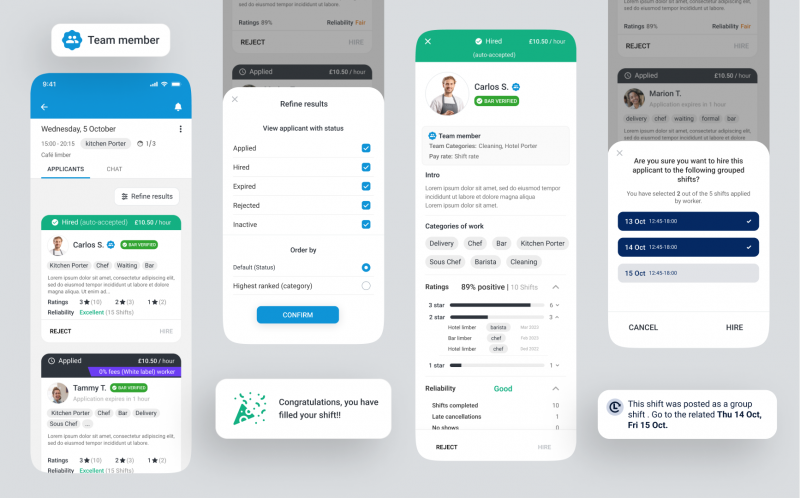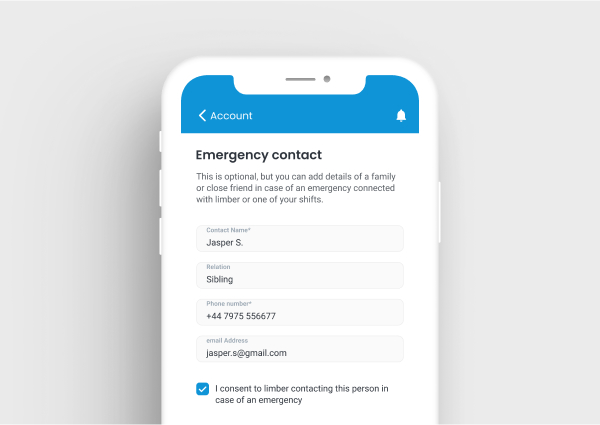I’m currently talking to a lot of temp agencies about our white label platform and it got me thinking about when we first launched limber, 3 years ago. One of the things that people are always amazed by is how, quickly we managed to amass 40,000 downloads of our app despite, at the time, being a totally unknown outfit.
This kind of growth can sometimes feel daunting to a brand new start up, so I thought I’d provide 5 tips to achieving viral growth – I hope there will be some interesting stuff in here for both temp agencies and tech startups. Here goes.
Get some “power” users
If I’ve learnt one thing in 4 years of making mistakes, is that you cannot scale a business on the promise of value in the future. There are too many apps, products, platforms that deliver value now.
So, if you’re planning on creating viral growth (and you should be), you need a hardcore nucleus of early users who you can help now. Those early adopters are your firelighter, kindling and matches all rolled into one.
How did we do this? We went to speak to a room of Entrepreneurship students and told them about our journey to date. We didn’t sell. We didn’t ask them to join limber, we just told them about the trials and tribulations of building an app. The result was a guy called Sam Cheesman (he won’t mind me mentioning him) who was keen to gain some experience in an early stage startup. Sam was our first power user. He religiously used our app – he worked every shift on the platform in the early days and he waxed lyrical about it to everyone he met. He also earned good money along the way to fund various side hustles of his own.
We subsequently employed Sam full time and he works for FinTech startup, Moneybox now, but he was a great example of the type of people you need early on in your journey if you’re going to create fast growth cycles.
Be cool
Cool is hard.
A great analogy to look at here is FinTech. Monzo are cool and as a result they a have a great brand and a loyal following of consumers who will rave about everything they do. In contracts, Barclays bank is not cool – they’re big, successful, they have good tech and as far as I can see are the best of the big banks when it comes to their app offering. They’ll end up with all the same features as Monzo (within reason), but their app will never be cool. No one will start a conversation with “have you seen the feature Barclays just released?!” Barclays have loads of other great things going for them trust, like scale, like profit(!) but it’s hard for a traditional incumbent supplier to shake decades of a certain type of reputation.
Our app provides recruitment services, which isn’t inherently cool. I wouldn’t say that means we’re a recruitment company, but fundamentally, our app helps you find varied interesting work in your area. A lot of recruitment companies or temp agencies will be vying for the same people as us.
Compare these two approaches, for instance:
Temp agency: “Competitive pay. Lots of work available. At least 1 year’s experience required. Book your onboarding interview today”.
Us: “Pick up shifts at different employers in your area – with good pay, great variety and as much flexibility as you need. Download the app and pick up your first shift today.”
While some of this is marketing spiel, there are some important differences. The first asks you to be experienced. Straight off the bat, that’s alienated inexperienced people, with great attitudes or experienced people with low confidence. The first also asks you to come in for an interview. Yawn. Now you’ve alienated experienced people who definitely don’t want to have to come in, free of charge, and fill out some paper forms.
The second places no barriers (other than an app download) between the target audience and the benefits you’re offering. And crucially, it doesn’t assume anything about the candidate and it doesn’t rule anyone out.
This approach, in our case, involved us ceding some control. What if inexperienced people sign up? What if they have a bad attitude? What if it damages our brand? Which is another problem entirely – check out our other blog post on designing for trust for our thoughts on that. But, better to have viral growth and an addressable trust problem than no growth at all.
Create inherent viral loops
In order to achieve virality, there needs to be something inherent about your product which automatically creates that buzz and excitement, unless you’re willing to pay for it (which of course wouldn’t really be viral growth at all).
A perfect example is Huggg, the app that lets people or companies gift their friends or customers a coffee or a donut. When you receive the Huggg, you can redeem it – thereby interacting with Huggg’s web app. As you sip your coffee, you think, “that was really nice”, I’m going to gift my girlfriend, or boyfriend or Nan a Huggg of their own. So for every Huggg gifted, it’s very probable that some of the recipients will become Huggg customers and so the network effect of their app continues. It’s a really neat and likeable concept, and an inherent part of their product. There are plenty of other examples out there. To revisit Monzo, they helped this with their high vis bank cards – every time someone took the card out of their wallet, I can imagine their friends or the person behind the till took notice.
Our version of this is simply that every time someone works a shift on limber, they interact with the relevant employer’s own team. “Where did you come from?”. “What do you mean, limber?”. “Ooo, how does it work?”. “Can I get extra shifts on there?”. So, for every shift that is worked, 3 or 4 more people find out about it. And again, inherent in our product.
Beware – sometimes you can’t force this. See the last point number 5 for the health warnings. So, if it’s not inherent in your product or service, think very carefully about this.
Generate dopamine
As mentioned before, ‘buzz’ is key. We live in a saturated world of incredible technology, and as a result people are getting harder to impress. People need to use your product and go “cooooool”. It needs to generate dopamine, feel good factor or something which makes people talk about it, without crossing over into ‘gimmicky’. The time between using your service and the “wow” should be as short as possible and ideally the “wow” should come before someone has even agreed to sign up (appreciate that’s not always easy).
For us, it’s about signing up, and getting a notification within an hour or so for an opportunity to earn and getting on to a shift as soon as possible.
Have a great value proposition
Sadly, this is the most important one. Unless you’re OK with being a flash in the pan (think about how many games inside the app store come and go), you need to have a rock solid value proposition for any viral growth to work and be sustainable. If you don’t actually add value to people, it won’t succeed. It can’t succeed. There are too many great products out there that actually deliver.
So, whatever your ideas about viral growth, don’t expect it if you don’t have this fundamental. Equally, don’t ruin a perfectly good value proposition by chasing any of the 4 above. We’ve made that mistake before – creating what we thought was another brilliant viral loop. It might have been cool, but since no one was interested in the underlying value proposition, we couldn’t get any power users to care. The simple equation is you need all 5 of the above to create viral growth, but this last one is the most important. With a great value proposition, you can still scale; it’s just harder. Without this, you can’t hope to scale at all.




